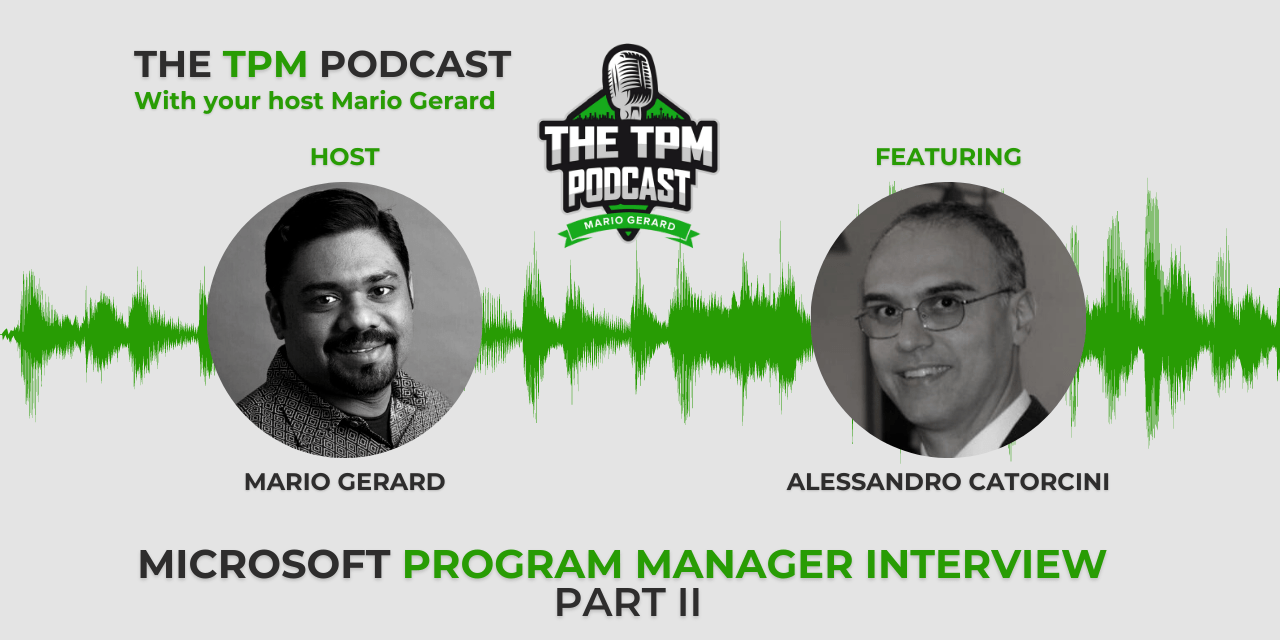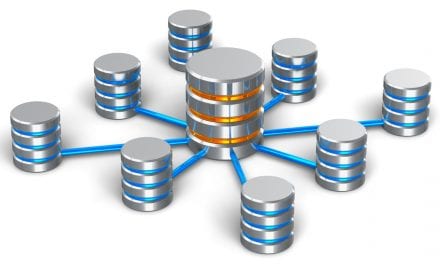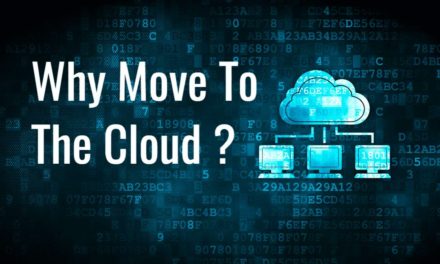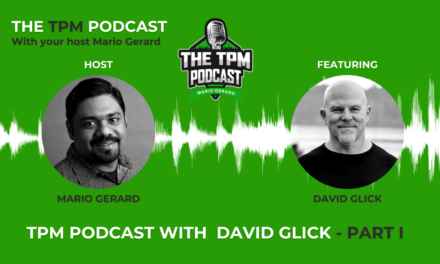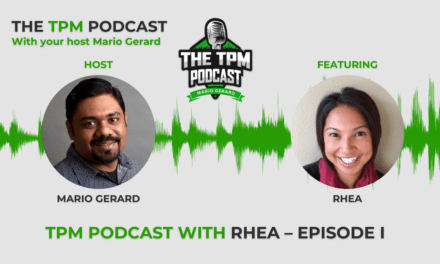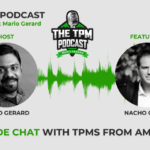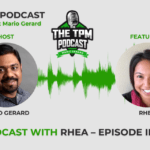Last updated on September 6th, 2024 at 08:56 am
Podcast: Play in new window | Download | Embed
Technical Program Manager Interview: With Alessandro Catorcini
A fabulous interview with Alessandro Catorcini! He has over 20 years of experience in tech. He spent over 15 years at Microsoft in various roles from being a software architect, a Principal Group Program Manager. He’s worked at Amazon and now he and I work at Oracle’s Cloud Infrastructure Team also known as OIC. He is one of those people I see who are solving problems that are large at scale. And another very interesting tit-bit is that he has done over 200 Interviews in the last 2 years at OCI.
We talk about:-
- TPM interviewing tips.
- Five core traits of Technical Program Managers.
- TPM leveling.
- What are the things to watch out for during an Interview in General.
- Compare the role across various organizations. Eg: Microsoft vs Oracle.
- What are some of the most understated qualities a TPM candidate must have?
- How do you evaluate a candidate’s technical aptitude?
Listen and enjoy!
Hello, and welcome to the TPM podcast with your host, Mario Gerard. This is the second part of the interview with Alessandro Catorcini. Hope you enjoy it. Keep listening.
What is T in Technical Program Management?
Mario Gerard: Let’s take another step and define what you believe is a T in the technical program management. I think a lot of people have that question. What’s your T and what is a T? How do you define it?
Alessandro Catorcini: It’s a spectrum really. And I’m looking at my own career. I started as the super T, you wouldn’t, you wouldn’t say looking at me now, but I mean that was the time when I got, I think it was 13 patents in two years because I was working on deep XML technologies the early two thousand, when it was cool, think about it I’m that old.
And it was all about really the optimization of the protocol, the definition of the standard, the most efficient way to architect the system and how to drive. They were at the time, four different dev teams across two products to deliver it. So that’s why you needed a TPM there because either you got the very senior architect, but that would’ve been an organizational issue.
Or you would have somebody that would simply act as the hub of the information that then would distribute it for implementation. Again, that was also Microsoft at the time when it was a software company. So, it doesn’t really apply to today, but that was an example of that was still a TPM.
And yeah, really think about a hub of deep technical information that affects a very large scope of development teams, where it is important to make sure that everybody drinks at the same source. These for example, are cases for compliance, for standards for general features that everybody has to share and that maybe implemented with the standard libraries that are shared by everyone.
So those are cases where you need a hub when the hub reaches a span that exceeds a certain threshold, you get to the point of diminishing returns, where if you put there an engineer the engineer spends the majority of his or her time talking rather than writing code. That is usually where you transition from being an engineer, to being a TPM. That is the extreme team.
The other extreme of the T is the project manager, where it really doesn’t matter what the task is. Your job is to create a framework around it, to make sure that it’s tracking is well documented, all impediments are tracked and who needs to know what, and by when is absolutely crystal clear.
Mario Gerard: And what’s in between, what’s like a midway point by five, like we say, at spectrums 0 to 1 to 10 what’s five?
Alessandro Catorcini: Five is an embedded PPM in a team where understanding the longer term implication, for example, in dependencies upstream and downstream of technical choices that you’re making, being able to clarify in advance the impact on, for example, scalability of some design compromises that you’re making kind of this type of really think about the embedded TPM is the foreign minister of a team.
So, what does your diplomatic core or need to know About what you’re doing technically, and to do that at the very least, you need to understand what you’re doing, why you’re doing it, why the other options don’t work and what is their impact, and to be able to relay also back the opposite. So, the objections, the what ifs, how can we change the rule of if we gave you some support or things like that.
Mario Gerard: What’s the background. I’m trying to think who would either be a good TPM? I mean, where did these people come from? Because TPM itself was, is very new. I know it’s been around in different…
Alessandro Catorcini: TPM is a very wide spectrum. And again, if you want to be a TPM with a really capital T it’s almost inevitable that you need to be an ex-developer, at least you need to be trained as one. It’s kind of, I’ve seen a lot of PMs that are pass to me with tongue and cheeks, fail developers as in developers who can code, but don’t like it. That where they derive pleasure from. So, it’s kind of, they can, if they have to, but I mean, it’s not their first instinct.
If you think about it, the discipline of PM at Microsoft rose exactly out of this. So, developers that realized that there was coordination needed across teams started doing that and coding less and less. And eventually stopped coding. And did that full time.
Mario Gerard: I think that’s the journey, right. Of becoming a TPM. It’s a very interesting journey. I’ve seen candidates.
Alessandro Catorcini: Oh. And honestly, back to your question, I’ve seen TPMS of every walk of life. I’ve seen, I mean, I had an ex-reverend, I had a lot of people that were, for example former military officers. That were engineers of course but were engineers also not necessarily software engineers. So mechanical engineers, materials engineers or mathematicians, supply chain experts’ kind of, it didn’t really matter. They all had a passion for the process of getting things done rather than what they were getting done.
How do you evaluate the T when you meet a candidate?
Mario Gerard: That’s a good way to put it. Sticking with the T and the TPM. How do you generally evaluate the T when you meet a candidate? You don’t need to give your secrets away.
Alessandro Catorcini: No. Usually…
Mario Gerard: Like how do you put, where does it fall in the spectrum?
Alessandro Catorcini: Well, the first and the most basic thing is explain me something, but basically, oh yeah. You worked on this project. What was it? Oh, why did you do it this way? What were the constraints? And if you can go to that level, especially for a project that maybe is not one year ago, but five.
Mario Gerard: Oh yeah. That’s a good point. Can you just recollect and tell me some basic architecture?
Alessandro Catorcini: The easiest way to spot an inflated resume is asking somebody to a person, not one job ago, not two jobs ago, at three jobs ago. If they can tell you all the details of what they were doing seven years ago, you’re fine.
Helpful read – Technical Program Manager Resume Checklist
Mario Gerard: That’s very interesting.
Alessandro Catorcini: That’s a dirty trick. Cause Usually people of course know everything about what they’re doing today. But if they were really engaged and they were really doing it and they were really the guy, they have no problem telling you what they were doing 20 years ago. There’s a lot of debate, for example, the, the classic right. Question of the type, kill me first, please. Like, I don’t know, design me a phone for old people. There are infinite approaches, but the, the guy that wins the prize is always the guy that transcends the fact that a phone has to have a certain shape that gets to the point where a phone is device. Who’s only reason to exist is to make person a talk to person B Yeah. And walks back from solving that problem. I mean, an okay answer is, yeah. Okay. You have the bigger buttons. You have maybe tells you the number as you’re typing it, things like that.
Mario Gerard: But more from a technical…
Alessandro Catorcini: Jumping into the features, the other, and the problem that you’re solving. But what about the technical system design, like system architecture?
Alessandro Catorcini: System architecture. It’s one of those things that becoming incredibly domain specific because sure. You are coming to interview for a cloud. If I’m asking you how to design a system to do, I don’t know, VM reservation and VM reclamation, we can start talking about what it is, how it works, what it is supposed to be and start growing some boxes. Why not?
Mario Gerard: It becomes very specific because if I’m going to work say for an ad company, they’re probably going, the definition of T is going to be completely different.
Mario Gerard: And I think that’s what a lot of people struggle with.
Alessandro Catorcini: And here really, it’s where, you shouldn’t be struggling there because you should know your customer, your customer here is your interviewer. What does he need?
Mario Gerard: Yeah. I see what you’re saying. You’re saying definitely do some research and then figure out what problems you’re trying to
Alessandro Catorcini: Solve. I mean, the ultimate research is researching personally every person that you’re going to talk to so that you are going to have an idea about what their life and dislikes are.
Mario Gerard: Yeah. Well, it’s very surprising when I meet candidates who have not researched about the interview panel, but have not even researched about the company or the product I feel, do you care enough? If this was a life functioning decision? [09:40 inaudible] is a life altering decision, right? Because you’re spending 10 hours of your day, eight hours of your day, not at home, but at somewhere else, and that’s going to be half your life for the next X number of years, you have not done any research about us. You haven’t formed an opinion. What do you say to that?
Alessandro Catorcini: Well, it comes in different flavors. There is the highly benign situation where no, I didn’t, because first I want to form my own impression about looking at you guys, and kind of getting an idea about the internal culture unbiased. And then I’m going to read what you tell the public what you want me to think about it. So, this is one approach. Then there is the other approach, which is the man just coming here so that I can get an offer and I can get a raise.
Mario Gerard: Yeah. Yeah. You see, you’ll see. I’m sure you’ve seen those cases.
Alessandro Catorcini: Yeah. Usually, you smell those from miles. And guess what, those usually do not get at an offer.
Mario Gerard: Yeah. True. I like people who have done a little bit of research and were passionate about the calls.
Alessandro Catorcini: Yeah. The large majority of the people at least have a clue about what they’re coming. And again, you put it perfectly, it’s a life altering situation. So yeah, at the very least have a reason why you’re here. Usually I always open with, okay. What brings you here.
Mario Gerard: As open as that. Let’s talk a little bit about how you level a candidate. You don’t need to go into what we do here, but in general, how’s your thought process because I’ve seen you in debriefs where you are like, I’m telling you that this camera is at this level, I’m telling it to you at this level of certainty that I know that he’s not there yet. And I’ve seen me given points where I’ve [11:31 inaudible].
Alessandro Catorcini: Especially in companies that have very wide levels and very well sat as Oracle it’s frankly pretty easy because the communication register changes pretty dramatically from one level to another, and it’s pretty easy when you’re talking with one to know that you’re talking with an [11:56 inaudible], because he reasons like one, he approaches a problem. Like one that he tops down really starts high. He knows when to pull in exacts, if necessary, when to push back from a business level.
So those are usually telltale scenarios. And not only they know they have talents, and they have a track of record of having done it.
Mario Gerard: And we cannot fabricate such things. It’s almost impossible to fabricate. I’ve interviewed a couple of people where, as you said, when you ask a question, where do they start from? Do they start just like everybody else going [12:33 inaudible]?
Alessandro Catorcini: Usually it’s as simple as how do they take what you tell them. Do they simply take it? Do they ask a couple of clarifying questions, or do they ask you the why questions? Why there is a another [12:45 inaudible] one?
Mario Gerard: Yeah. I cannot put into words like you did. It is evident that most times when you have somebody a very, very high caliber the interaction is very different from an unseasoned candidate.
Alessandro Catorcini: It is really like, and there’s also a difference between the young and experienced, brilliant candidate. And the guy that has been doing it for 30 years.
Mario Gerard: Yeah. They have battle scars.
Alessandro Catorcini: They act differently.
Mario Gerard: Yes, yes.
Alessandro Catorcini: It’s kind of the, there is less energy, but it’s focused in one shot one kill.
Mario Gerard: Yeah. Very precise. And they have a very interesting story to tell. Not that the brilliant young guy doesn’t, it’s just a different type of approach.
Alessandro Catorcini: A different approach. It’s a more deliberate approach.
Mario Gerard: Yeah. More clean, more precise, more surgical. Sometimes it’s like very like precise, more focused. Yes. Cool. I know the TPM role, you know, TPMs as a title probably didn’t exist like 10 years ago. As far as I knew, but the roles, they were people doing the stuff.
Alessandro Catorcini: I still remember my story. The first time I got to Microsoft, because I mean kind of, I had sent them a resume as a joke, and they didn’t take it as a joke. So, they brought me in for an interview at the time was living in Paris in France and they had kind of one of those hiring sweeps in Paris. So, they brought me in for an interview as for [14:15 inaudible] and I remember that I arrived in front of this guy that I know now that about how we do the, at least they used to do those trips.
That probably was one of his last interviews of the day after he had interviewed all day, he was dead tired, jet lagged and everything. He was like almost wasted and put in front of me, the usual piece of paper with find me the duplicates, read me the C function that finds the duplicates in an array of integers. I remember the first words out of my mouth, why?
She had a double take. I said, why, just do it. Yeah. I mean, why? In which context, what kind of performance signature did you need? Give me something to work with. I mean kind of what’s the context I I’m doing this, and I mean, after kind of a 10 minutes of back and forth over this one, he looked at me funny, wait a minute. And he brought in a different lady that was the, the HR lady at the time that said, have you ever heard of this role called program manager, I said no, but it sounds nice.
And so long story short they didn’t have the panel to interview for PMs there. So, they had to fly me to [15:29 inaudible] the week after. And, while later here [15:33 inaudible]. It was funny because I mean, in a way I had been a PM all my life and I didn’t know.
Mario Gerard: That exactly. So that’s the point I was coming to. So, you painted a beautiful picture of how it happened, where do you see it going? I mean, do you see the role evolving, is the market, the market has also changed a little bit or has it, has it not?
Alessandro Catorcini: Not really. It’s kind of a, well, the fact that dinosaurs like me not extinct yet says that probably hasn’t.
Mario Gerard: You should definitely take into account that you’ve evolved as a person. You tremendously evolved.
Alessandro Catorcini: The interesting part there is that the discipline of TPM is intrinsically dynamic. I mean, do you really know what you’re going to do tomorrow morning? What your day is going to be on Monday?
Mario Gerard: Honestly, I don’t. I know I’m going to busy as heck.
Alessandro Catorcini: Exactly. And that is exactly the point. I mean, you can scale the fact that your activity is undefined in tasks, but defining goals to the day, to the month or to the year or to the decade. Now does ambiguity from disappeared from business activities. No. So this is in a way what spells business security for TPM.
Because every time that an organization reaches a certain level of complexity, you really need to start brushing the hair that’s getting long.
Mario Gerard: So, you are saying that the role itself is never going to go away.
Alessandro Catorcini: It’s going to morph slightly the priorities maybe subject to fashions. The tools will definitely change, but I mean the intrinsic need for communication ganglia’s remains.
Mario Gerard: And whatever you might rebrand that role to be 10 years from now.
Alessandro Catorcini: With Jen, we’re joking, that engineering in an organization is the state really, it’s very well defined. There are command chains, TPMS in organizations are the church.
Mario Gerard: In what sense?
Alessandro Catorcini: I mean, I joined a new team about a month and a half ago. The team was made of all new people that came from different places in the organization and started working together. One week in, we started to all know each other and kind of define what we had to do, the details and everything. And at this point we have a direct of engineering. We have a VP; we have director of product management.
Well, the guy that had the line at his desk, people are asking questions about, hey what are we doing really? Is this focusing on what we are doing with this help? Should I be doing it this way? I mean, I had a constant line of four people. Well, you saw right? And Peter next to me was [18:30 inaudible.
Mario Gerard: Yeah. Especially when you started a new team.
Alessandro Catorcini: So, it was kind of interesting because I acted as the gateway to the rest of the organization so I could find them the answers to the questions. For example, if we do it this way, would the service the other side of the organization work well with us? Who should I talk to [18:52 inaudible]?
Mario Gerard: And that is going to evolve, right? Your role in this particular team because it’s very amazing.
Alessandro Catorcini: I have been assigned a pretty specific role right now that actually, it’s kind of funny because actually see, this is interesting actually now that you mentioned it, because so far, we have talked about TPMS as if they were a bi dimensional discipline. In reality, they are tri-dimensional discipline, which is probably something we should talk about.
Cause we want to model the continuum of PMs and TPMS, which is what we didn’t do. You can model it within the space and close by Tetra Hadron with four Vertis that are customers, business, process, and technology. If you flatten in the plane away from technology, you got PMs. If you flatten in the plane, away from customer, you have a pure TPM. In reality, you’ll always have something that floats in that space closer to one plane or to the other.
Mario Gerard: Well, let me rephrase what you said in how I’ve envisioned it in my mind. I envisioned TPM as a person who owns delivery or getting stuff done. And there’s a product manager who’s responsible for the vision.
Alessandro Catorcini: But let me make you an example.
Mario Gerard: And I feel that these two roles are married at the hip. That’s how I normally tell people.
Alessandro Catorcini: In a way if we go back to what I was defining originally as the TPM is connective tissue. TPM continues in, is really a continuum from engineering and is a continue on the other side into product management. It’s really what there is in the middle and more.
Mario Gerard: Yes, that’s what I was saying. Some people, and you can see some people lean more towards the product management side. Sometimes some people lean more toward the technical side sometimes
Alessandro Catorcini: Let’s make you an example. The project that had been assigned last week is to design a third-party pipeline for our marketplace. How do we choose what to get on our marketplace? How do we build the requirements, not just for the engineering, but also to the business development so that we can Inc contracts that work well with what we are doing? There’s not a lot of T’s there actually there’s lot of B’s, honestly, it’s pretty darn interesting because I have no clue how I’m going to do it or what I’m going to do.
I’m spending a lot of time talking with the linkers and the negotiators right now to figure out what it even means.
Mario Gerard: To add to that. I feel when we talk about leveling, this is exactly what level, highest level of TPM can do. He can oscillate between the business side, sometimes some people are TPM and they’re only in the business side or some people might be expert in product. I feel the leveling is how versatile are you to oscillate between these functions.
Alessandro Catorcini: Oscillate horizontally and oscillate vertically. So how deep can you go in each one of those? If necessary.
Mario Gerard: I think see breadth is a must have, I think depth has two functions. One is I’ve seen some people who don’t have the depth at all, but if you put them in the room, they ask 20 questions and can get the entire depth Very fast.
Alessandro Catorcini: Remember that doesn’t mean you need to have it. It means you need to get it.
Mario Gerard: Get it. And able to understand.
Alessandro Catorcini: If you need to delegate to get it or to rely on an expert to get it, that’s perfectly fine because you are finding the expert.
Mario Gerard: Yeah. But you also need to digest that. I think that I’ve seen the most capable people, they don’t need to know the answer, but when they get the answer, can I consume that answer and make sense of it?
Alessandro Catorcini: Think about it. You have just defined how a T is good enough. What is the level of T that is good enough for this [22:58 inaudible]? That is exactly the criteria that defines it. Can I understand the answer? Can I tell the good dancer when I see it?
Especially, can I tell the bad answer when I hear it?
Mario Gerard: Yeah. That is, you’re talking about a little bit about interpreting the answer itself. Yes. That is, Can I consume it in the first place to interpret? I think that’s where you know, and it’s very interesting that you are very, now you’re going to figure out the business side, but then you in turn over a period of time, you’ve come to the T as well, because you’re starting the business right now. You’re figuring out what the problem area is.
Alessandro Catorcini: I promise you that there will be features of the service that I’m missing. That the business will be clamoring for. I’m encroaching product management there, indirect product manager, product management. I’m not asking customers how to do it, but in the process of streamlining how to do this, I will find hosts.
What would be your advice for people who believe they want to be TPMs
Mario Gerard: Yeah. That’s, we should maybe talk more about the, about how these four things fit together at a later point. If I maybe that’s for our next time. I have one final final question. What would be your advice or points and tips to people who are fairly new in their career and who believe they want to be TPMS? What are certain things that they should do, or they should be aware of? Or if you could go back to 20 years before.
Alessandro Catorcini: It’s an easy one. Keep taking the toys apart.
Mario Gerard: Keeping the toys apart. Okay.
Alessandro Catorcini: Take them apart and to figure out how they work and put them back together. Eventually figure out how to make them better. Cause that’s what it is about. Get to the essence of it. Don’t stop at the surface.
Mario Gerard: Try to go as deep as possible.
Alessandro Catorcini: Even if a problem has been solved, it doesn’t mean that the solution is optimal. Can you make it better and does making it better mean do something different? Always have a background thread about this. Doubt everything.
Mario Gerard: Ask yourself questions, yourself.
Alessandro Catorcini: Doubt Everything, especially yourself.
Mario Gerard: Wow. That’s deep. But at the same, you shouldn’t be questioning your decisions or commit or things.
Alessandro Catorcini: No, once the decision is made that torpedo has fired. You Either abort it or you wait for the boom when it hits something. There’s no such a thing as retracting it, firing it again. It’s done.
Mario Gerard: Cool. That brings us to the end of it. Do you want to add anything to it? Because if I did ask…
Alessandro Catorcini: Well, no, we touched lot of topics and I’m not sure if I gave you some semi senile rantings about it.
Mario Gerard: I think we did well, I look forward for feedback on what people want to hear more of maybe. But I think we definitely went to the entire breadth of covering the role of a TPM. And then what that entails, what are the positives of what we look for in TPM characteristics. And then we did some red flag and then we went onto the scope of what the TPM does and how the interviews are laid out, what we look for in candidates and the whole, you know, team spectrum. I think we touched upon really, some really good topics. So, thank you so much for joining me today.
Alessandro Catorcini: My pleasure. Thank you.
PS: You can find more podcasts here. If you are looking to ace your TPM interview, here are technical program manager interview questions that can help you crack it.
Ready to rock your TPM Interview?
A detailed interview prep guide with tips and strategies to land your dream job at FAANG companies.

